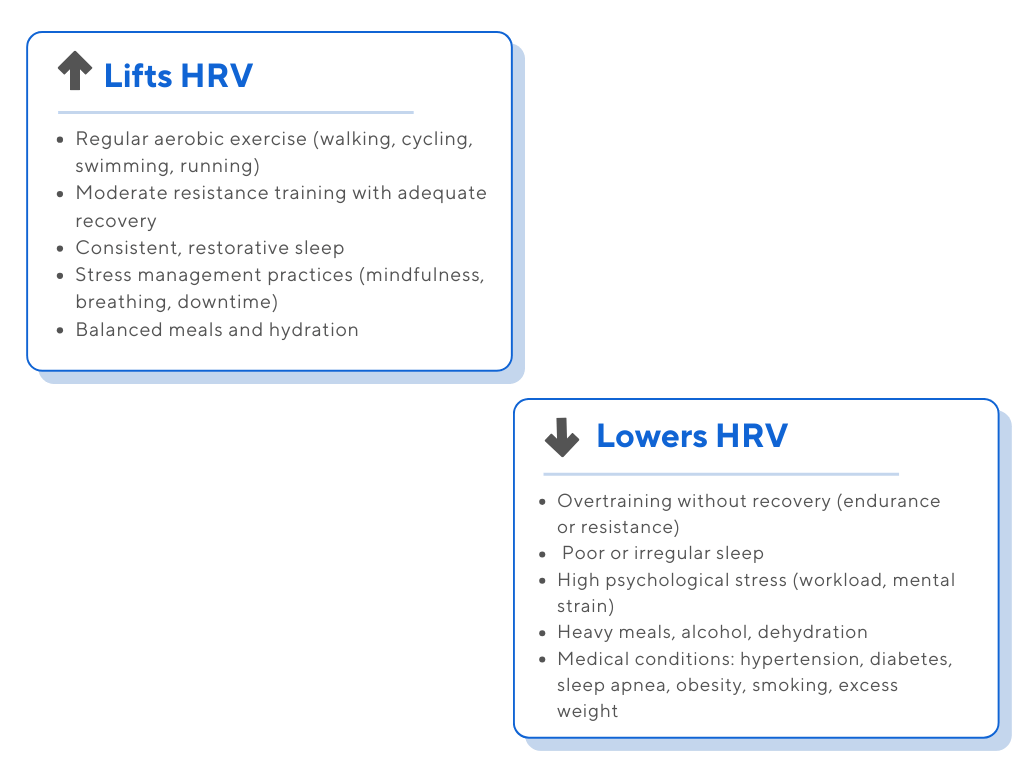Heart Rate Variability: What It Really Tells Us
Discover what heart rate variability (HRV) means, how lifestyle factors influence it, and why consistent tracking helps guide recovery, training, and long-term health.

I’m often asked about heart rate variability (HRV). It’s become a popular metric—many wearables already track it—and for good reason. HRV offers insight into how the nervous system manages the balance between stress and recovery, effort and rest.
The science is extensive, but meaningful interpretation requires context. Before discussing what HRV can tell you, it’s important to stress that how it’s measured matters. A single reading carries a lot of variability, but a consistent protocol (same time each morning, same position, comparable conditions) allows HRV to be interpreted as a reliable trend.
With that foundation, remember HRV is shaped by many factors—age, genetics, sleep quality, psychological stress, medications, fitness level, and even what you ate the night before. Its value lies less in the number itself than in making the data actionable: using it to guide sleep, training, recovery, and nutrition decisions that improve day-to-day function and compound toward long-term health.
What HRV Actually Measures
HRV is the variation in time between heartbeats. A healthy heart isn’t a metronome—it speeds up and slows down naturally in response to breathing, stress, and activity.
- Higher HRV generally reflects adaptability and resilience.
- Lower HRV often reflects stress, fatigue, illness, or reduced recovery capacity.
It’s important to understand that the value of HRV isn’t a single number on any given day, but the trend over time—and how it fits within the context of your overall health, sleep, fitness, and stress load.
Lifestyle Factors That Shape HRV
Think of HRV as a reflection of your daily habits, with the following areas tending to have the biggest impact:

Making Sense of It All
It’s easy to get caught up in daily fluctuations, but the real value of HRV is in the big picture. When interpreted in contest, it can be a valuable metric for guiding practical, sustainable changes.
- Track it over weeks and months, not day-to-day fluctuations.
- Interpret it with context—alongside sleep, training, mood, and recovery.
- Use it as a signal for balance, not a score to chase.
Bottom Line
HRV isn’t a verdict on your health, and it’s not a score to chase. The metric is most useful in context, alongside how you live, train, and recover. By prioritizing consistent movement, restorative sleep, balanced nutrition, and effective stress management, you lay the groundwork not just for healthier HRV, but for a longer, healthier life.

.avif)



